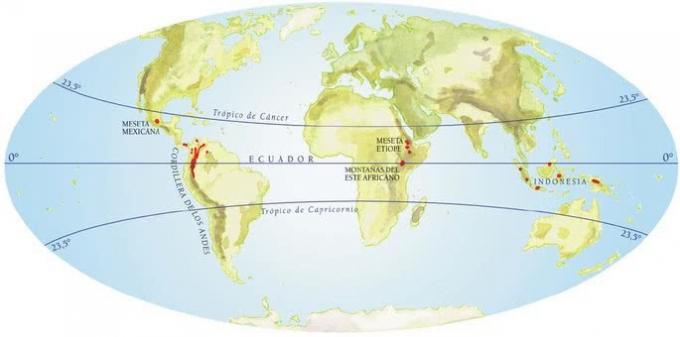The practice of agriculture it is one of the oldest activities performed by humans. At the Neolithic Period, the constitution of the first techniques and materials used for the cultivation of plants and confinement of animals was the main cause for what was called the sedentarization of human beings, which allowed them to live in a given location, although gathering and hunting have long lived side by side with agriculture.
The development of agriculture, therefore, was directly associated with the formation of the first civilizations. helps to understand the importance of techniques and the technical means in the process of building societies and their spaces geographic. In this sense, as these societies modernized their techniques and technologies, the evolution of agriculture met its advances.
Originally, the practice of farming was developed in the vicinity of large rivers, notably the Tigris and Euphrates, in addition to the Nile, the Ganges and others. Not coincidentally, it was in these locations that the first great civilizations emerged. news, as the practice of agriculture allowed the development of trade thanks to the production of surplus.
the agricultural revolution
One of the most important moments in the evolution of agriculture throughout history was, without a doubt, what became known as the agricultural revolution. We can say that, over time, several agricultural revolutions followed, but the main one occurred from the Industrial Revolution.
The process of industrialization of societies allowed the transformation of geographic space in rural areas, which occurred thanks to the insertion of greater technological devices in agricultural production, allowing greater mechanization of the field. This transformation materialized from the supply of industry inputs for agriculture, such as machinery, fertilizers and technical objects in general.
The development of the agricultural revolution in the world was also directly associated with the expansion European maritime-colonial, in which the European peoples spread different cultures around the world by in the middle of plantations. In Brazil, the most evident case was the production of sugarcane. It is worth remembering that this interaction between settlers and colonizers also contributed to agricultural evolution, as techniques before little known began to be applied, such as terracing practiced both in ancient China and by civilizations pre-Columbian
Do not stop now... There's more after the advertising ;)
The Green Revolution
In the 20th century, more precisely after World War II, the evolution of agriculture reached one of its most important levels, which became known as green revolution. It is basically a set of measures and promotion of techniques based on the introduction of improvements genetics in plants and in the evolution of agricultural production apparatus to increase, above all, the production of foods.
The introduction of techniques from the green revolution allowed a large-scale increase in the production of grains and cereals, significantly reducing the need for food in various regions of Asia, Africa and Latin America, although hunger has not been eradicated, since its existence is not only due to the lack of foods. The impact on the world was so wide that the American agronomist Norman Borlaug, considered the “father” of the Green Revolution, was awarded the Nobel Peace Prize in 1990.
Although the Green Revolution is widely criticized for its environmental impacts and also for the process of concentration of land that accompanied its evolution, its importance for the development of agriculture in the world. Furthermore, as an extension, improvements resulting from technology in the field, such as the biotechnology and the introduction ofGeographic Information Systems in the agricultural production line, which has been intensifying the increase in productivity.
By Me. Rodolfo Alves Pena
Would you like to reference this text in a school or academic work? Look:
PENA, Rodolfo F. Alves. "Evolution of agriculture and its techniques"; Brazil School. Available in: https://brasilescola.uol.com.br/geografia/evolucao-agricultura-suas-tecnicas.htm. Accessed on June 27, 2021.



